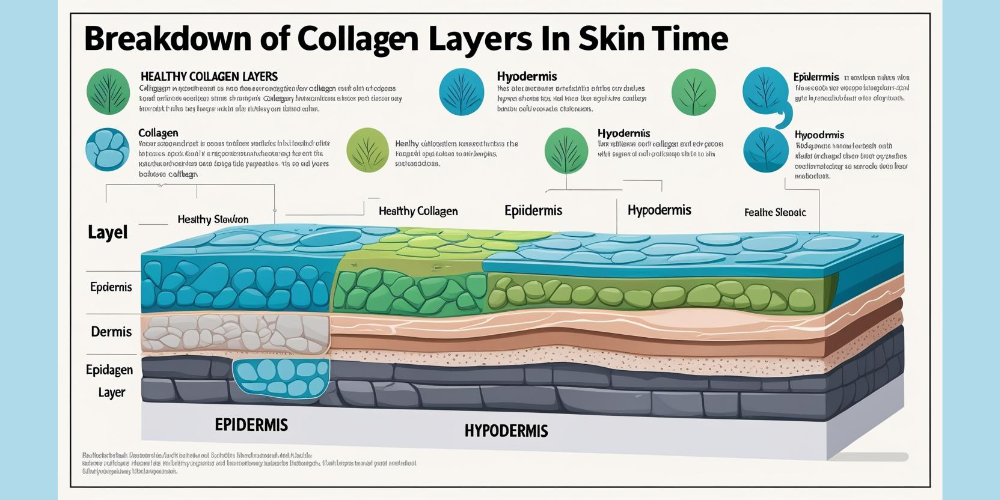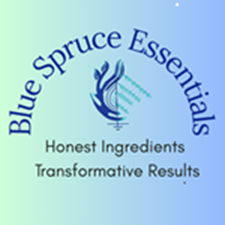
How Your Skin Changes After 40, and How to Care for It
Share
Turning 40 is a milestone, and your skin starts telling that story. But if you’ve noticed your skin behaving differently after 40, you’re not imagining it. This decade marks a turning point where hormone shifts, environmental stressors, and collagen decline begin to show on the surface. The good news? With the right pro-aging skincare routine, you can effectively support your skin’s evolving needs.
In this article, we’ll break down how your skin changes after 40 and share clean, science-backed tips to help it thrive, not just survive.
1. Collagen Loss and Elastin Decline
After 40, collagen production drops by about 1% per year. This leads to:
- Fine lines and wrinkles
- Sagging or loss of firmness
- Thinner skin over time
Restore and support with:
- Peptides signal the skin to ramp up collagen synthesis, improving firmness and skin texture
- Babchi oil, a plant-based alternative to retinol, encourages skin renewal and collagen production without irritation
- Rosehip oil is packed with natural vitamin A (retinoic acid) and omega fatty acids, which support elasticity and help soften fine lines
- Pomegranate seed oil, Rich in punicic acid and antioxidants, helps increase skin regeneration and elasticity while fighting inflammation
- Hydrolysed quinoa protein strengthens the skin matrix and improves elasticity, especially when combined with collagen-boosting ingredients
2. Slower Cell Turnover (Dull, Uneven Skin)
As cell regeneration slows down, dead skin cells linger on the surface, leaving the complexion looking dull and uneven.
Instead of AHAs/BHAs, use these natural exfoliants:
- Papaya and pineapple enzymes – Natural alternatives to synthetic AHAs, these fruit enzymes brighten and refine texture
- Pumpkin enzyme – Mild yet effective at renewing dull skin
- Mulberry extract – Offers natural exfoliating and brightening properties, helping fade dark spots and improve clarity
Post-exfoliation care:
- Aloe vera soothes, calms, and hydrates
- Honey is a natural humectant and antibacterial agent that supports skin healing
- Turmeric reduces inflammation and evens out tone
- Hydrolysed quinoa aids barrier repair while exfoliation is working its magic
3. Dryness and Moisture Loss
Hormonal shifts, especially during perimenopause and menopause, lead to reduced oil production, leaving skin dry, rough, and sometimes flaky.
Restore and seal moisture with:
- Hyaluronic acid, a powerful humectant that attracts and retains up to 1,000x its weight in water
- Sodium PCA, a naturally occurring component of your skin’s natural moisturizing factor (NMF), supports hydration and suppleness
- Jojoba oil closely mimics your skin’s sebum and regulates moisture without clogging pores
- Almond oil is rich in vitamins E and K, helping to smooth and soften dry, mature skin
- Argan oil provides omega-6 and vitamin E, making it perfect for nourishing and healing dry skin
- Rice bran oil stands out for its phytoceramides and gamma-oryzanol, which strengthen the skin barrier, reduce trans epidermal water loss (TEWL), and support elasticity
- Pomegranate oil – Helps restore hydration while improving skin tone and promoting regeneration
These oils mimic the skin’s lipid matrix, acting as a breathable seal that protects the skin while allowing it to heal and stay hydrated.
4. Increased Sensitivity
With aging comes increased skin sensitivity due to a weakened moisture barrier. This can lead to redness, irritation, and heightened reactions to skincare products. Choose fragrance-free, gentle formulations and perform patch tests when trying new items.
Calming and protective ingredients:
- Green tea extract delivers powerful antioxidants that soothe inflammation and combat free radicals
- Niacinamide helps strengthen the barrier, reduce redness, and improve skin resilience
- Cold-pressed almond and jojoba oils replenish lost lipids without causing congestion, supporting a healthy, balanced barrier
- Aloe vera offers instant relief to sensitive or inflamed areas
- Pomegranate oil – Anti-inflammatory and antioxidant-rich, it protects, and calms stressed skin
5. Hyperpigmentation and Age Spots
Cumulative sun damage often results in dark spots, uneven tone, and pigmentation in your 40s. Protect your skin with broad-spectrum SPF 30+ daily, rain or shine.
Brightening and protective solutions:
- Alpha arbutin gently fades dark spots and evens out skin tone without irritation
- Vitamin C and licorice root extract help block melanin production and brighten the complexion
- Turmeric and green tea act as natural antioxidants that fight oxidative stress and prevent further pigmentation
- Niacinamide supports overall tone correction and enhances skin clarity
Daily Skincare Tips After 40 (SEO-Optimized Quick Guide)
- Use a broad-spectrum SPF 30+ every single day
- Build a consistent skincare routine with barrier-strengthening oils and natural actives
- Moisturize generously with botanical oils and humectants like hyaluronic acid
- Exfoliate gently with fruit enzymes
- Eat a diet rich in antioxidants, healthy fats, and hydration
- Drink plenty of water and get consistent sleep
Final Thoughts: Embrace Your 40s With Confidence and Care
Your skin in your 40s deserves extra love, but not extra stress. By embracing natural, science-backed ingredients like phytoceramide-rich rice bran oil, peptides, babchi Oil, niacinamide, and fermented fruit enzymes, you can support your skin’s natural processes and maintain a healthy, glowing complexion.
Aging is inevitable. But how you nourish and protect your skin makes all the difference.
✨ Ready to support your skin, your way?
Explore our pro-aging essentials at Blue Spruce Essentials, where science meets self-care.
